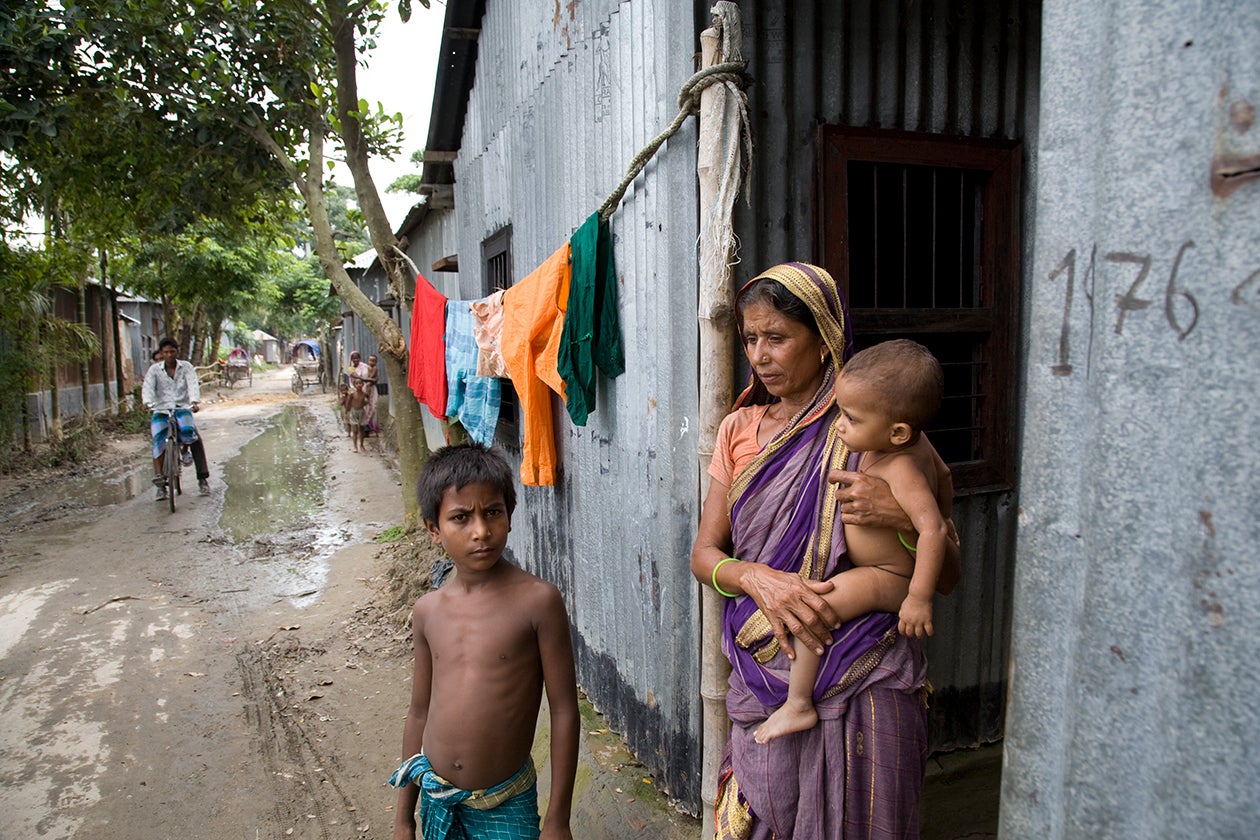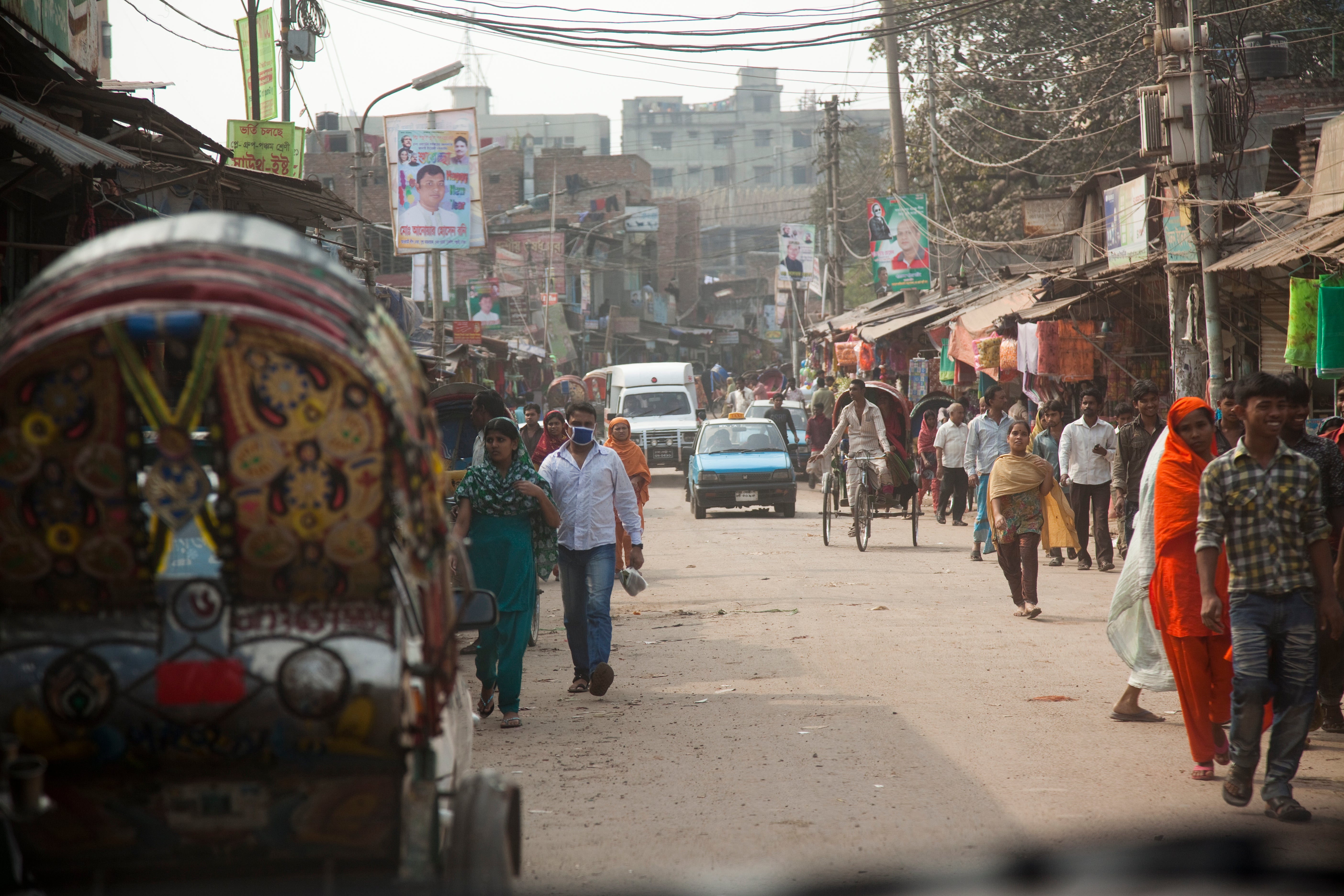Key Points
Bangladesh’s CHW program was among the first in the world.
Bangladesh’s program has, for more than 40 years, adapted to address the nation’s most pressing health challenges.
A patchwork of government and NGO CHW programming helped the country overcome scarce human and financial resources to deliver critical primary care to more than 100 million rural residents.

The first CHW program in Bangladesh started shortly after the country’s independence, as the cash-strapped government’s innovative attempt to provide family planning information and services to rural residents. It proved to be a turning point. The government had hit upon a remarkably efficient and effective health care delivery model for a densely populated – yet still rural – country with few doctors and nurses, even fewer rural clinics and, at least initially, low demand for care.
What makes Bangladesh’s story unique is that for the next 40 years both government and NGOs iterated on the CHW model – sometimes in collaboration and sometimes in parallel. The result has been robust pluralistic CHW programming noteworthy for large impact and scale, data-driven innovative programming, and integration into the larger health system.
NGOs were critical to this success. With CHW programming that grew to rival the government’s in size, NGOs helped Bangladesh achieve remarkable improvements in health outcomes in three ways:
- NGOs helped the government expand and strengthen government CHW programming, test new approaches, and better understand and address challenges through research.
- NGOs developed their own programming that has delivered care to large numbers of Bangladeshis.
- NGOs served as government contractors, working for the government to address geographic or programmatic gaps. These activities included leading community engagement, from educating mothers about ORS to promoting government immunizations campaigns.
Initially, in the country’s early years, the government’s reliance on NGOs and its outsourcing of some community health worker programming and related research was a recognition of both limited government resources and capacity, and NGOs’ deep expertise and comparatively vast resources. This outsourcing strategy had the added benefit of buffering CHW programs from political interference and a slow, unresponsive, risk-averse, and poorly resourced bureaucracy.
Recognizing the strength and diversity of NGO approaches, by the late 1990s the government had shifted its role. It saw itself less as a provider of CHW programming and more as a purchaser of services – increasingly contracting with NGOs for CHW services.
More recently, amid a profusion of NGO CHW programming and a dizzying patchwork of programs that are at times complementary, supplementary, and overlapping, the government has shifted again. It is currently working with NGOs to develop standards for training and care, as well as the country’s first national CHW strategy to better coordinate and regulate varied programs. With this, the government hopes to address inefficiencies and fragmentation (including growing health inequities) and challenges in coordination and management (including various CHW cadres lacking common training or coordination).
Throughout, the government could not have had better equipped partners for this endeavor. The indigenous non-profits that have led CHW programming in Bangladesh alongside the government, including BRAC and icddr,b, have deep roots in Bangladesh’s rural communities and rich expertise in research, monitoring, and evaluation.
Together, the NGOs and government have expanded CHW programming beyond its initial focus on family planning, to address child health in the 1980s, maternal health in the 1990s, and universal health care in the 2010s.

Such robust programming had modest roots. Initially, there was little demand for health care in rural areas. CHWs recruited patients, visiting homes, mosques, and community institutions. They educated rural residents about the safety and benefits of family planning services and immunizations. They also provided medicine for common but deadly child illnesses like diarrhea and acute respiratory infections. Slowly, communities that had lived for generations without access to such health care, began to demand it. This was a watershed moment for health care in Bangladesh. To meet the growing demand for care, the government built 13,000 community clinics, staffed them with CHWs, institutionalizing the role of the CHW and reducing the amount of time CHWs spent traveling to visit patients. It also increased the amount of time available for patient care and formally connected thousands of rural villages with the national health system for the first time.
Today, approximately 130,000 CHWs work to deliver health education, preventive, promotive, and limited curative care across Bangladesh’s rural areas. About 50,000 of these CHWs work for the government, 50,000 work for BRAC, and the remainder work for other NGOs and the private sector.
These cadres have unmistakably transformed the country, empowering women and facilitating broad health improvements. Between 1990 and 2015, Bangladesh achieved a majority of health-related Millennium Development Goals by reducing under-five mortality rate by 75 percent, infant mortality rate by 72 percent, neonatal mortality rate by 65 percent, and maternal mortality ratio by 71 percent. The contraceptive prevalence rate among rural women has increased by a factor of 10 from the 1970s to today. The percent of rural children who receive the critical DTP3 vaccine has increased from near zero in the 1980s, to more than 90 percent today.
For this reason, Bangladesh’s unique and diverse CHW programming may hold lessons worth adapting and replicating.
Trajectory of mortality rates and key health indicators in Bangladesh over time
Institute for Health Metrics and Evaluation (IHME). Global Burden of Disease Study (GBD 2017) and Health-related SDGs Viz Hub. Seattle, WA: IHME; 2018. http://www.healthdata.org/gbd.
